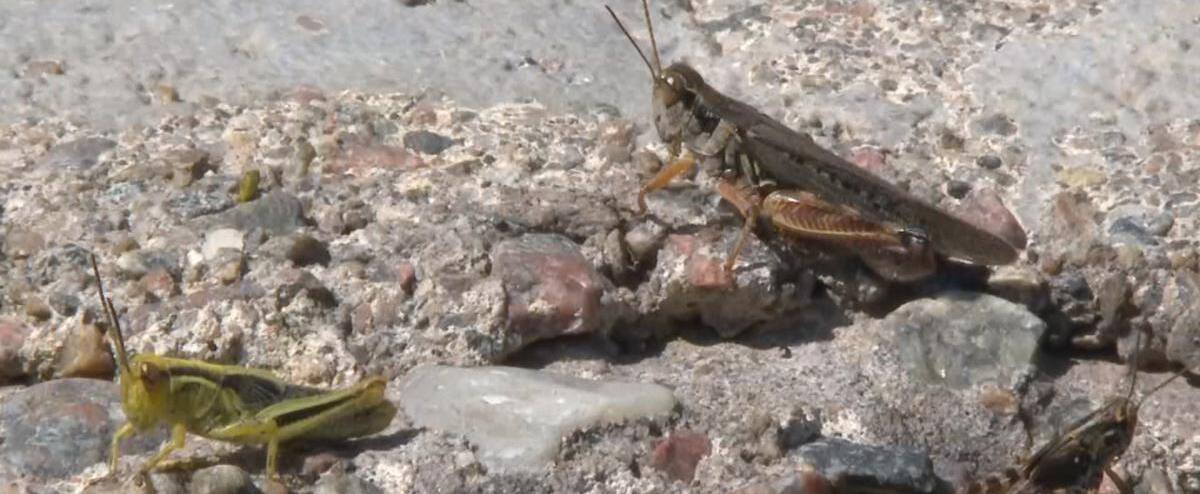Swarms of locusts blackening the skies and devastating all crops in their path have been known since biblical times, but they still threaten the food security of millions of people in Asia and Africa today.
Scientists announced Thursday that they have discovered a pheromone that these insects emit in order not to be devoured by their fellow creatures – a discovery that could be used in the future to tame these voracious beasts.
Bill Hansson, director of the department of neuroethology at the Max Planck Institute and lead author of this study, published in the journal Science, told AFP that he relied on previous research, having shown that these swarms were partly governed by the threat of cannibalism.
Cannibalism is not uncommon in the wild — from lions eating cubs that don’t belong to them, to foxes eating their dead kin to feed themselves.
For locusts, cannibalism serves a very specific purpose.
Migratory locusts (locusta migratoria) go through such different behavioral phases that until recently they were thought to be separate species.
In general, these animals are rather solitary and eat relatively little.
But they transform when their population density increases, during rains and temporarily optimal breeding conditions — followed by a period of starvation. A surge of hormones then makes them hum, forming these swarms and making them more aggressive.
This time is known as the “gregarious” phase, and cannibalism would keep them moving to lead them to more food-rich areas, according to a 2020 study led by Iain Couzin of the Max Planck Institute for Animal Research.
Indeed, explains Bill Hansson, “locusts are eaten from behind. So if you stop moving, you get eaten by another.” Which explains why the swarm is heading in the same direction.
“We said to ourselves that every animal develops a kind of defense,” continued the researcher.
To determine this, the experiments lasted four years. He and his team first proved that cannibalism rates did indeed increase when “gregarious” locusts were increasingly numerous in a cage (from 50), demonstrating in the laboratory what had been observed in the field in Africa by Iain Couzin.
Then they compared the odors emitted by solitary and gregarious locusts, and identified 17 of them produced exclusively by gregarious-phase locusts.
One chemical in particular, phenylacetonitrile, has been shown to repel other locusts in tests.
This substance is involved in the production by the gregarious locust of a toxin (hydrogen cyanide), and it therefore seems logical that it constitutes the signal sent to other individuals to keep their distance.
To confirm their discovery, the scientists used CRISPR molecular scissors to genetically modify the locusts so that they could no longer produce phenylacetonitrile. Result: they were more vulnerable to cannibalism.
The researchers did not stop there, testing dozens of locust olfactory receptors, finally settling on one of them, which was particularly sensitive to this chemical substance.
Genetically modified locusts, no longer able to use this receptor, exhibited enhanced cannibalistic behavior.
In a commentary article also published in the journal Science, researchers Iain Couzin and Einat Couzin-Fuchs said the discovery sheds light on the “complicated balance” between the mechanisms driving migratory locusts to group together, or enter. in rivalry.
Methods to control their population could use technology increasing competition between them. At the same time, “we must not eradicate the species”, warns Bill Hansson.
And to add: “If we could reduce the size of the swarms, or attract them to places without crops, then we will have gained a lot.”
